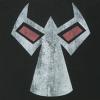Virtual Void ?? what does it mean ?
Sory guys but i have to know what a ''Virtual Void'' function does - what does the ''Virtual'' bit do to a function.
Does it mean that it is defined in another file ?
Im a bit stuck cause i dont know how to use it so help would be appreciated.
Thanx
''Once a smurf, always a smurf''
quote: Original post by Havana Smurf
Sory guys but i have to know what a ''Virtual Void'' function does - what does the ''Virtual'' bit do to a function.
Does it mean that it is defined in another file ?
Im a bit stuck cause i dont know how to use it so help would be appreciated.
Thanx
The void keyword stands for "a function which returns nothing". Here''s an example :
void print_copyright_infos(){ cout<<"(c) LOADED"<<endl; cout<<"www.loaded.fr.st"<<endl;} The virtual keyword is a bit more complex. It only applies to member functions of a class and is used for inheritance. If your function is virtual then you can overload it in the class childs.
If you need more precise informations, just send me a mail.
The virtual keyword is usually used to define functions in a base class. What it means is that the function might be redefined in a derived class. Check the Help system that comes with MSVC++ for more help
This RtS-Babble© has been brought to you by:
-Run_The_Shadows
-Run_The_Shadows@excite.com
This RtS-Babble© has been brought to you by:
-Run_The_Shadows
-Run_The_Shadows@excite.com
BTW, it is not used in inheritance (except when it''s null) but only when you polymorphs the class.
I always understand better with an example, so I''ll give you one:
The DerivedB class is invalid because you HAVE to derive the member Tata. Since it is null, you always have to derive it.
The "pB->Titi();" line prints "Base->Titi" because Titi was not virtual in first place. This is only used with polymorphism.
The "pB = new Base" is invalid because you cannot make an instance of a class which contains null functions.
You could have made a derived class with null functions, but in this case you wouldn''t have been able to make a reference to it, only inherit it.
This may seem a bit complex, but once you use these concepts, you find them pretty simple.
I always understand better with an example, so I''ll give you one:
#define EOL (''\n'')class Base{public: virtual void Toto() { cout << "Base->Toto" << EOL; }; virtual void Tata() = 0; // A null function. void Titi() { cout << "Base->Titi" << EOL; }; // A non-virtual function.};class DerivedA: public Base // This class is valid.{public: virtual void Toto() { cout << "A->Toto" << EOL; }; virtual void Tata() { cout << "A->Tata" << EOL; }; void Titi() { cout << "A->Titi" << EOL; };};class DerivedB: public Base // This class is invalid{public: virtual void Toto() { cout << "B->Toto" << EOL; }; void Titi() { cout << "B->Titi" << EOL; };};void main(){ Base* pB = new DerivedA; // Polymorphs... DerivedB B; pB->Toto(); // Output "A->Toto" pB->Tata(); // Output "A->Tata" pB->Titi(); // Output "Base->Titi" pB.Toto(); // Output "A->Toto" pB.Tata(); // Output "A->Tata" pB.Titi(); // Output "A->Titi" pB = new Base; // Generate error...} The DerivedB class is invalid because you HAVE to derive the member Tata. Since it is null, you always have to derive it.
The "pB->Titi();" line prints "Base->Titi" because Titi was not virtual in first place. This is only used with polymorphism.
The "pB = new Base" is invalid because you cannot make an instance of a class which contains null functions.
You could have made a derived class with null functions, but in this case you wouldn''t have been able to make a reference to it, only inherit it.
This may seem a bit complex, but once you use these concepts, you find them pretty simple.
Now I know what I'm made of, and I'm afraid of it...
The function Tata is known as a pure virtual function in C++.
TheViper
TheViper
This topic is closed to new replies.
Advertisement
Popular Topics
Advertisement
Recommended Tutorials
Advertisement







